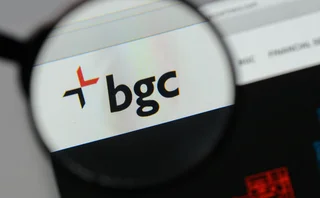Spin, Hype and Hyperbole

Talk about spin, and it conjures up (for our UK readers at least) flash government communications directors, or on a more amusing level, Peter Capaldi going full Glaswegian on Whitehall. Indeed, one of the first things you're taught as a reporter is to separate spin from fact. One memorable incident I had during work experience on my local paper was the news editor asking me how I'd go about doing that with a stack of paper press releases (without trying to date my early entry too much). When I stammered a rubbish response, he put them in the wastepaper bin and gave me his phonebook, telling me to call the people quoted directly.
That being said, the press ─ particularly the financial and trade press, it seems ─ is given over to recycling spin and hyperbole to the point of hyping it up. That isn't necessarily down to laziness on the part of reporters, but down to the function of the job itself. A lot of the time we report the conversation, as we don't (or shouldn't, anyway) trade the markets, so we rely on people to tell us what they see as the current trends.
And, of course, sometimes that trend changes, but the phraseology and convention now mandatory when discussing a certain topic area becomes so ingrained that it takes on a life of its own. Try to find an article about swap execution facilities around the made available to trade dates in February that didn't reference a "big bang" moment. One which, incidentally, never came. Likewise, collateral crunch has been a favorite phrase for many years now, not just among the vendors who sell collateral management software but also participants, who found themselves increasingly concerned about the potential issue with each passing conference season.
But this, as Sapient's survey on collateral management suggests, may be changing too. More clarity from the regulators has led most people, the limited sample says, to change their perspective to one that accepts the inevitability of higher cost and demand for collateral, but not necessarily a chronic shortage of it. That seems like a positive move at least.
As always, if you've come to this editor's letter through the website, you can sign up for the Sell-Side Technology weekly newsletter for free, which will bring this column and all of the week's sell-side-related headlines to your inbox every Monday.
More clarity from the regulators has led most people, the limited sample says, to change their perspective to one that accepts the inevitability of higher cost and demand for collateral, but not necessarily a chronic shortage of it.
Only users who have a paid subscription or are part of a corporate subscription are able to print or copy content.
To access these options, along with all other subscription benefits, please contact info@waterstechnology.com or view our subscription options here: http://subscriptions.waterstechnology.com/subscribe
You are currently unable to print this content. Please contact info@waterstechnology.com to find out more.
You are currently unable to copy this content. Please contact info@waterstechnology.com to find out more.
Copyright Infopro Digital Limited. All rights reserved.
You may share this content using our article tools. Printing this content is for the sole use of the Authorised User (named subscriber), as outlined in our terms and conditions - https://www.infopro-insight.com/terms-conditions/insight-subscriptions/
If you would like to purchase additional rights please email info@waterstechnology.com
Copyright Infopro Digital Limited. All rights reserved.
You may share this content using our article tools. Copying this content is for the sole use of the Authorised User (named subscriber), as outlined in our terms and conditions - https://www.infopro-insight.com/terms-conditions/insight-subscriptions/
If you would like to purchase additional rights please email info@waterstechnology.com
More on Trading Tech
Consortium backs BGC’s effort to challenge CME
Banks and market makers—including BofA, Citi, Goldman, Jump and Tower—will have a 26% stake in FMX.
Symphony boosts Cloud9 voice offerings with AI
The messaging and collaboration platform builds on Cloud9’s capabilities as it embraces the AI wave in what CEO Brad Levy calls “incremental” steps.
Can exchanges leverage new tech to claw back ETF share from RFQ platforms?
Systematic trading strategies and proliferating data are bringing efficiency to an otherwise-fragmented European ETF market.
Nasdaq reshuffles tech divisions post-Adenza
Adenza is now fully integrated into the exchange operator’s ecosystem, bringing opportunities for new business and a fresh perspective on how fintech fits into its strategy.
Liquidnet sees electronic future for gray bond trading
TP Icap’s gray market bond trading unit has more than doubled transactions in the first quarter of 2024.
This Week: HKEx's new derivatives platform; GoldenSource; Quonian-SimCorp, and more
A summary of some of the latest financial technology news.
Chris Edmonds takes the reins at ICE Fixed Income and Data Services
Edmonds is now leading ICE’s fixed income and data business as the rush to provide better data and analytics in fixed income builds.
Systematic tools gain favor in fixed income
Automation is enabling systematic strategies in fixed income that were previously reserved for equities trading. The tech gap between the two may be closing, but differences remain.
Most read
- Chris Edmonds takes the reins at ICE Fixed Income and Data Services
- Deutsche Börse democratizes data with Marketplace offering
- Waters Wavelength Podcast: Broadridge’s Joseph Lo on GPTs








